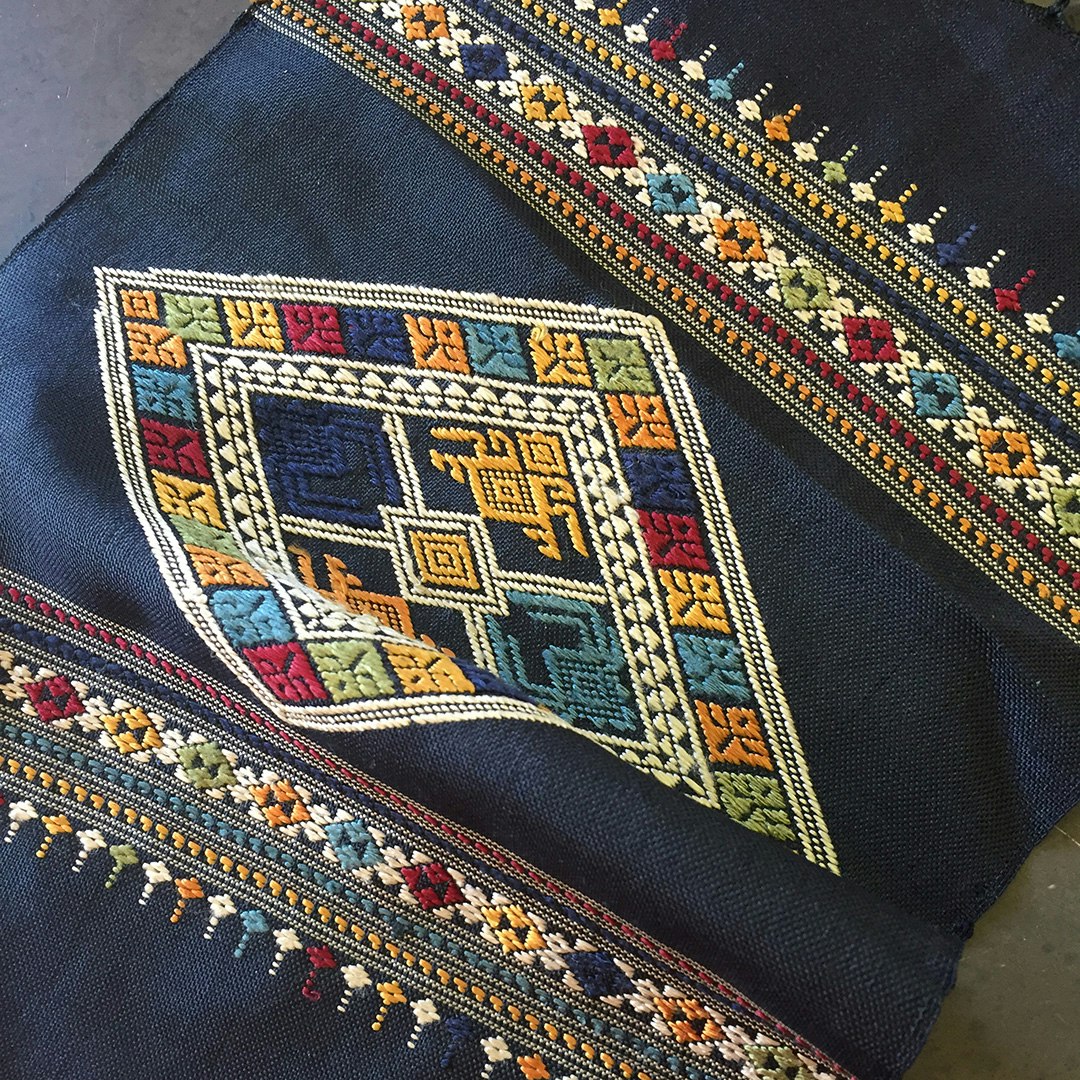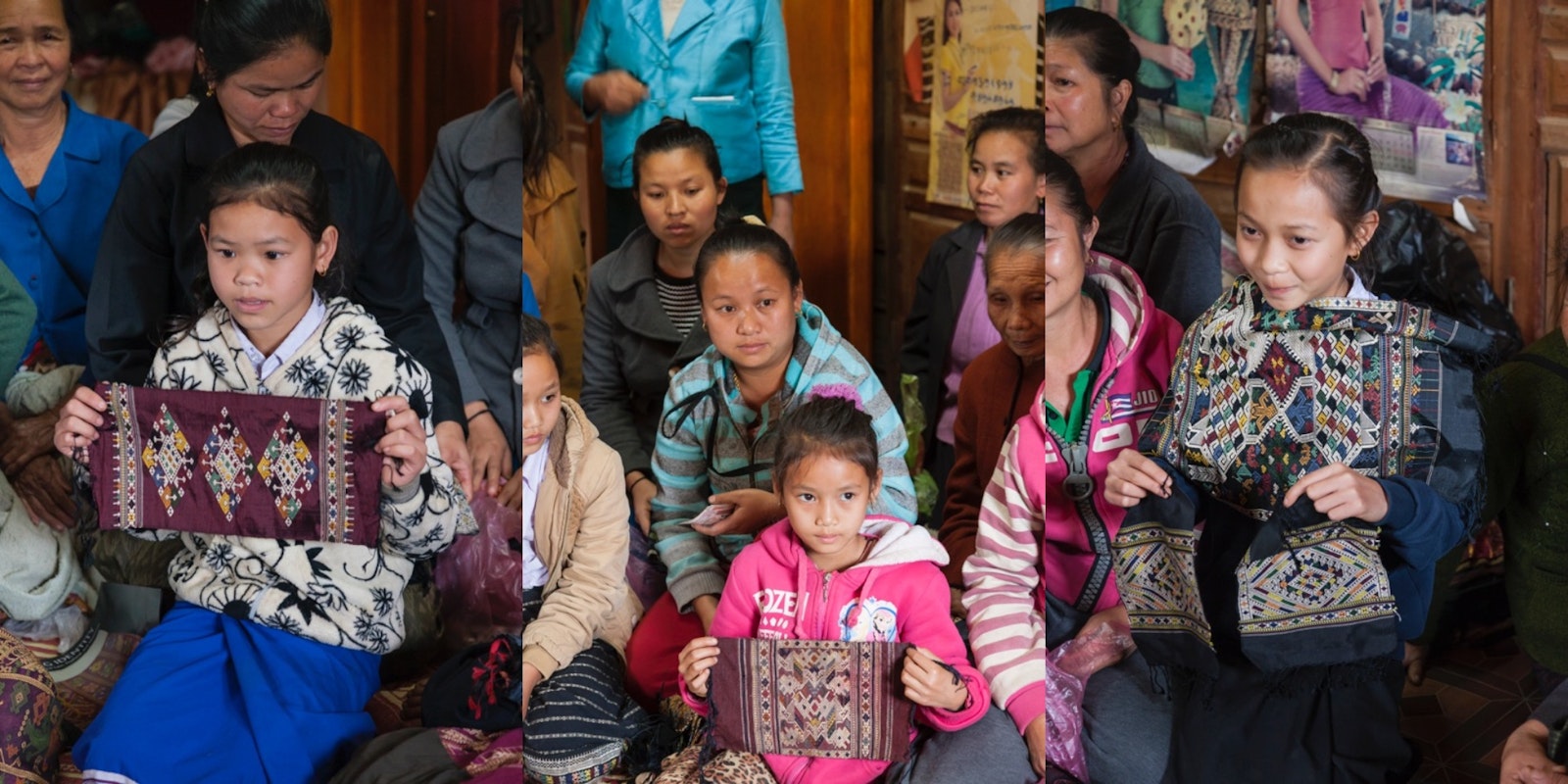Everywhere I’ve traveled—Peru, Guatemala, Mexico, Morocco, Afghanistan, Laos, China—I’ve asked the same question. “Who taught you to do your craft, and at what age did you start?” The answers are so consistent. The teacher was a mother or grandmother, and the age was seven.
I remember turning seven and suddenly having a sense of myself as a person, having agency. I think it’s just human—baked into typical childhood development. You get better hand dexterity, you get a longer attention span, you get a sense that you can do some things that the grownups can do. You are ripe for learning more demanding skills.
If you had been a poor child in preindustrial England or the United States, age seven is when you might have been sent to the textile mills. If you’re a village girl in the Andean highlands, at seven you can spin a decent yarn, and by the time you are eight, weave a narrow band on a backstrap loom.
The most impressive example of the magic of seven that I’ve seen was in northeastern Laos in Huaphon Province. Almost every family in the rural villages has one or more working looms in the shady area under their homes. Many raise and reel their own silk and dye their own yarn. Younger kids can participate in these activities. But the weaving! The looms are complex, and the patterning is fine and intricate. There, young girls begin by weaving “love tokens,” small practice pieces about 7 by 9 inches. They use traditional patterns and the same materials as the adults, and the exercise is not “dumbed down” in any way. Once they can weave a good love token—accurate patterning, consistent beat—they can go on to a full sash or scarf or whatever they please. Just look at the children in the photo above, posing with their love tokens while their proud mothers and grandmothers look on. By the time they are in their early teens, they might be earning significant income with their weaving—enough to take them away to school and a day job in the city (a path that many aspire to).
 An example of silk weaving from Laos
An example of silk weaving from Laos
I compare their work to my own efforts at age seven: a cross-stitched “Home Sweet Home” with a rather crude printed, not charted and counted, pattern and a doll-size scarf knitted on size 10 needles. It was a start. I wonder if the expectations had been higher, would I have been able to do more challenging work?
My granddaughters are really skilled with their thumbs on their phones. They enjoy various needlecrafts, too, but it’s different—they don’t see them as a portal into adulthood. I like to think that the lessons they’ve learned from me and from their mothers will be of use someday, though. Maybe they’ll knit some socks or hem a tea towel. I think it will give them pleasure, connect them to the past. Different kinds of love tokens.
Linda Ligon is a co-founder of Long Thread Media.
Read more about the weaving traditions of Laos in Silk Weavers of Hill Tribe Laos: Textiles, Tradition, and Well-Being.
Originally published August 8, 2020; updated March 8, 2023.

